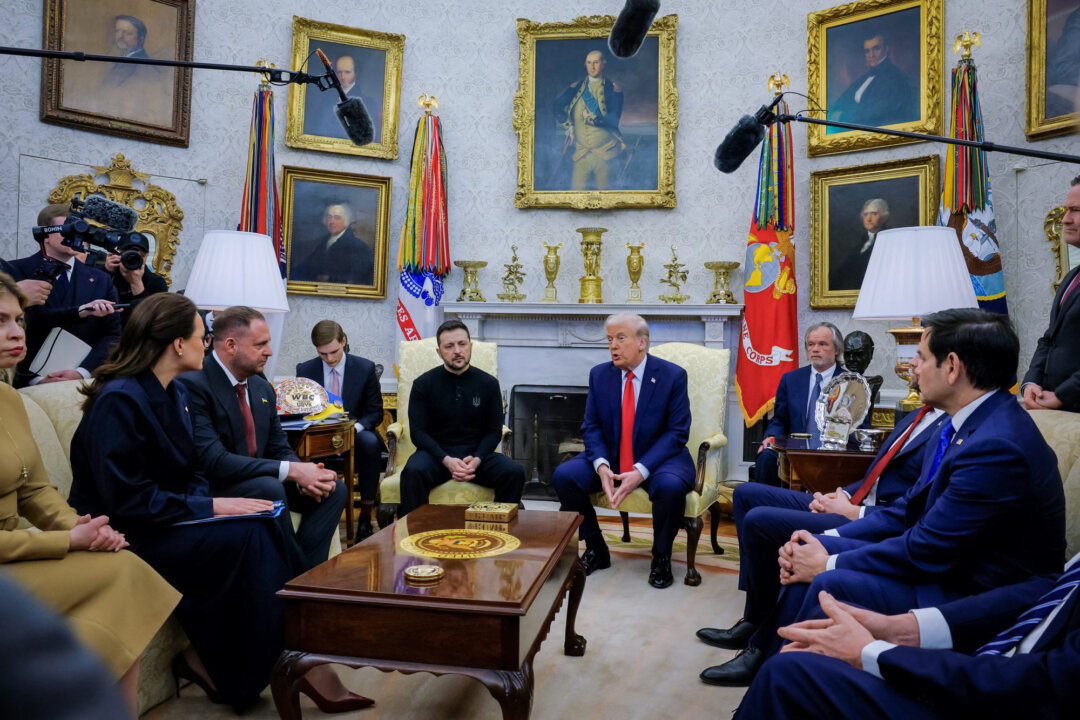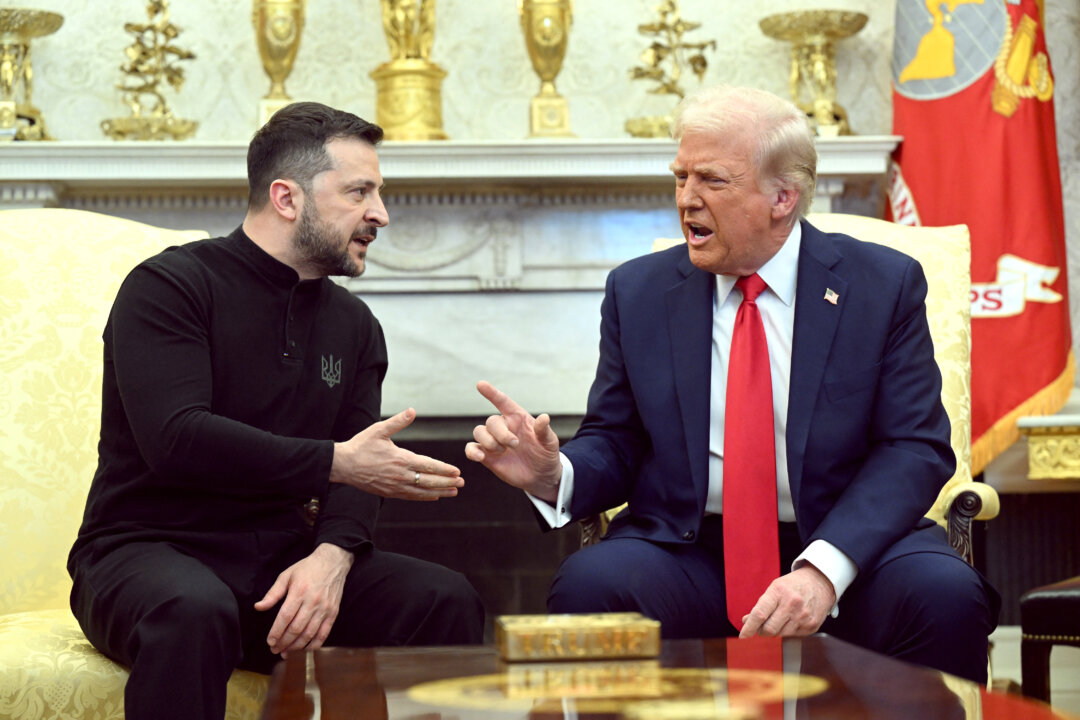How the War in Ukraine Unfolded and How It Might End
Key moments over the past 11 years have shaped Ukraine’s fate, while a cease-fire framework begins to take shape.
PART 2
...
Yanukovych Ejected From Office, Flees to Russia
Yanukovych secretly fled Kyiv on the night of Feb. 21. The protest movement hailed the moment as a revolutionary victory against a corrupt post-Soviet regime.
On Feb. 22, 328 of Parliament’s 450 members voted to remove Yanukovych from office, saying he had abandoned his duties. No one voted against the measure and 36 members of the president’s own party voted for it.
Parliament also voted 386–0 to reinstate the nation’s 2004 constitution, which was a condition of the previous agreement with the EU that Yanukovych had reneged on.
That night, in a televised address from eastern Ukraine, Yanukovych declared that he would not resign, saying that he was “the legitimate head of the Ukrainian state” and that Parliament’s reversion to the 2004 constitution was illegal because he had not signed the action into law.
Yanukovych and other close officials of his regime were prevented by Ukrainian border guards from flying out of the country as leadership in Kyiv unveiled charges of treason and mass murder against him.
He then requested and received support from covert Russian military operators, who smuggled him from Donetsk Province to Crimea and ultimately into Russia, where he received asylum from Russian President Vladimir Putin.
....
Counterrevolutionary Protests Erupt
Yanukovych was convicted in March 2014 in absentia of high treason against Ukraine and wanted for mass murder because of his actions against protesters the previous month.
From Moscow, he continued to proclaim that he was the rightful president of Ukraine and to call on Ukrainians to resist what he characterized as an illegitimate government in Kyiv.
Russian state-owned media began to describe the president’s ouster as a coup organized by U.S. intelligence, and counterrevolutionary protests erupted in southern and eastern Ukraine, where most of the population speak Russian as their first language.
Out of fear that pro-Yanukovych protesters in east Ukraine were being influenced by Russian propaganda, the Ukrainian Parliament adopted a bill to revoke the status of Russian as an official state language.
The bill was not enacted but caused mass outrage and fear in the eastern and southern regions of Ukraine.
Thousands of counterrevolutionary protesters marched against the new government in several major cities.
...
Public surveys revealed that most people in Ukraine’s Russian-speaking east considered all levels of the new government to be illegitimate.
....
The Annexation of Crimea
At the end of February 2014, Sergey Aksyonov, a Russian citizen, was elected as prime minister of Crimea after inviting Parliament into a locked session in the presence of armed Russian soldiers.
The appointment required the approval of the president, which was delivered by Yanukovych in Moscow.
Throughout March, Yanukovych continued to urge members of the Ukrainian military to disobey orders from the new government.
Russian troops began to covertly infiltrate the Crimean peninsula in southern Ukraine.
Russia’s representative at the United Nations sparked alarm when he informed the U.N. Security Council that Yanukovych had requested Russian military assistance to protect Russian-speaking civilians in Ukraine.
On March 4, Putin told reporters that sending troops into Ukraine was legal because Yanukovych was the “legitimate president” of Ukraine and had requested it.
Russian special forces and local paramilitaries seized government buildings in Crimea throughout the month, raising Russian flags wherever they went.
Hundreds of anti-government protesters also blocked access to the Crimean Parliament, demanding that local lawmakers not recognize the new government in Kyiv as legitimate and requesting a referendum on Crimea’s status as an autonomous republic.
....
In a blow to the new government in Kyiv, Crimean leaders recognized Yanukovych as the rightful president and obtained his approval from Moscow.
The referendum to declare Crimean independence was illegal under the Constitution of Ukraine recognized in Kyiv and effectively placed Ukraine in a state of civil war.
Aksyonov, as the new prime minister of Crimea, asked Putin for assistance in ensuring peace in Crimea, and Putin authorized an immediate Russian military intervention.
...
Donbas States Break Away
As Russia occupied and annexed Crimea, armed pro-Russian separatists began to seize government buildings in the eastern provinces of Donetsk and Luhansk, collectively known as the Donbas.
Rebel leaders announced a referendum on whether Donetsk should join the Russian Federation and elect several Russian citizens to the government.
In April 2014, rebels in Donetsk and Luhansk, which border Russia, formally announced that they were seceding from Ukraine to form the independent Donetsk People’s Republic (DPR) and Luhansk People’s Republic (LPR).
The two breakaway states were described in international media as puppet states of Moscow.
Russia did not formally acknowledge their independence, but Russian arms and fighters began spilling over the border to support the rebels.
...
Key moments over the past 11 years have shaped Ukraine’s fate, while a cease-fire framework begins to take shape.

www.theepochtimes.com

 www.theepochtimes.com
www.theepochtimes.com




